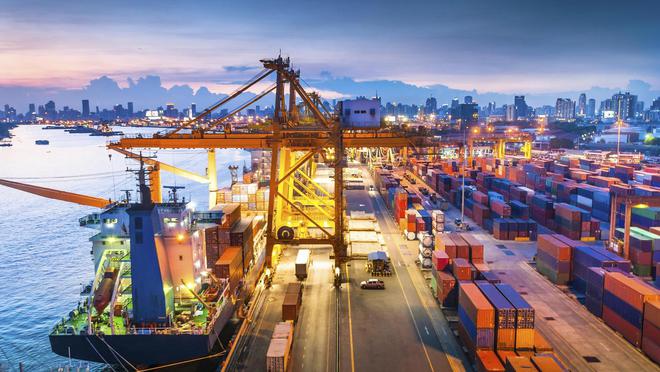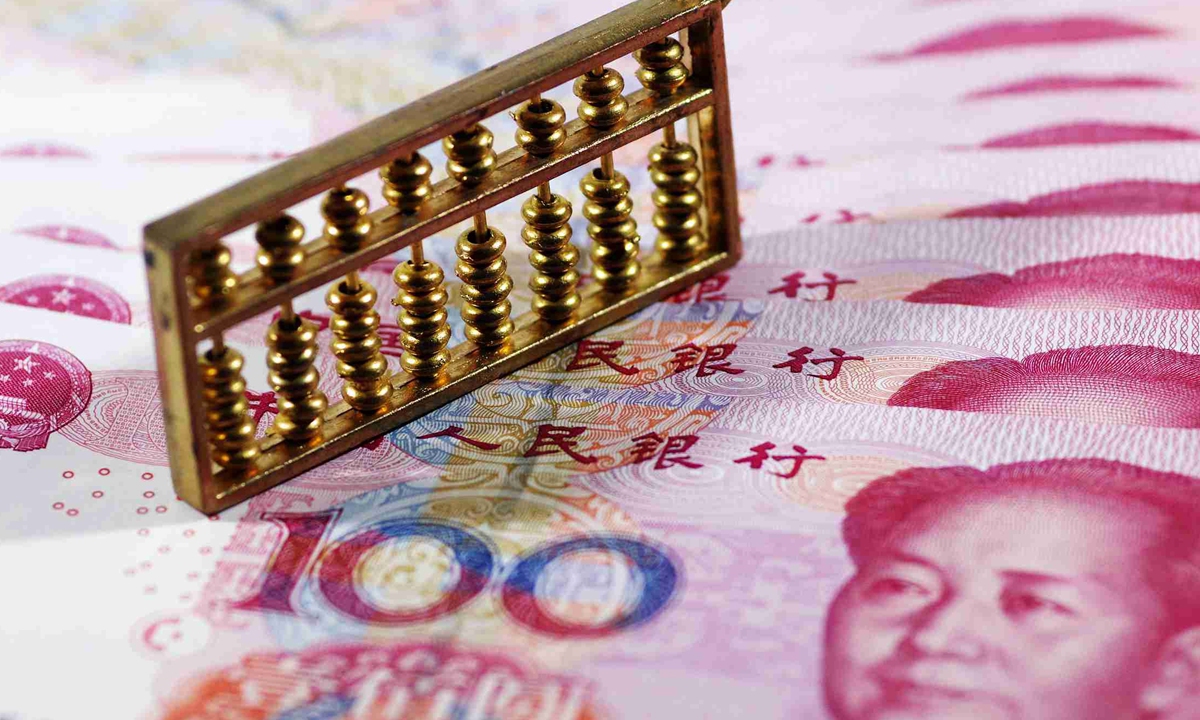
Manufacturing equipment Photo: VCG
There has been no shortage of pessimism regarding economic and trade relations between China and India, as Chinese companies are bearing the brunt of the most severe crackdown due to India's tendency to generalize security issues in its China trade policy. However, the latest data may indicate a different trend, serving as a reminder not to overlook the complementary strengths of both economies.
China again emerged as the largest trading partner of India in fiscal year 2023-24, Indian news agency PTI reported on Sunday. Bilateral trade stood at $118.4 billion, with India's exports to China up by 8.7 percent, according to economic think tank Global Trade Research Initiative (GTRI).
After the US became India's largest trading partner in fiscal years 2021-22 and 2022-23, this change in India's top trading partner status may come as a surprise to many, especially considering the tensions between China and India and the latter's scrutiny of Chinese companies.
This unexpected development underscores the potential for economic and trade cooperation between China and India, showcasing how the acceleration of the Indian manufacturing sector's development is leading to increasingly complementary economies.
For a long time, whether India could replace China as the world's factory has been a popular topic, but if you look at global industrial and value chains, India is not in the same segments as China. As India is seeking to become a manufacturing power, such a difference is poised to bring significant development opportunities for both nations.
China has a well-developed industrial system, solid manufacturing foundation and cutting-edge technologies in many areas, while India has advantages in the services sector, particularly in information technology services. With the implementation of the "Make in India" strategy, the country's needs for industrial chain support have increased, especially in technology- and capital-intensive products. This situation offers new market and collaboration prospects for China's manufacturing sector.
For instance, a study by the Indian Institute of Foreign Trade, a state-backed university in New Delhi, in April 2023 found that Chinese imports were boosting India's manufacturing and exports in key sectors, including inorganic chemicals, pharmaceuticals, iron and steel, the South China Morning Post reported.
Noticeably, over the years, some people in India have frequently criticized the country's trade imbalance with China, which may have had a negative impact on the development of bilateral trade. In fiscal year 2023-24, India's imports from China increased by 3.24 percent to $101.7 billion, while exports to China reached $16.67 billion, according to GTRI.
It's essential to attach great importance to this imbalance and find solutions to promote the healthy and long-term development of bilateral trade.
First and foremost, promoting the localization of Chinese companies in India is a crucial strategy to address the existing imbalance. By establishing production bases in India, Chinese companies can generate more employment opportunities and stimulate the growth of the local economy, ultimately aiding in the reduction of the trade deficit.
For instance, in India's rapidly expanding smartphone industry, only a small percentage of components are sourced domestically, with China continuing to dominate as the primary supplier for smartphone plants in the country.
Despite Apple's efforts to encourage its suppliers to invest in India, discriminatory economic and trade policies have dissuaded many Chinese component suppliers from doing so. Consequently, it is imperative for the Indian government to implement preferential policies and foster a favorable business environment to attract increased investment from Chinese companies.
In the meantime, China could gradually expand market access for Indian products, particularly in sectors like agriculture and services outsourcing.
Furthermore, both countries can enhance collaboration in science, technology and innovation, facilitating technology exchange and industrial advances through the establishment of joint research and development centers.
This initiative could incentivize companies from both nations to pursue partnerships in various fields, including renewable energy, information technology and other emerging industries, thus diversifying their trade structures and uncovering additional business prospects to mitigate trade imbalances.
It is sincerely hoped that by leveraging their complementary strengths and exploring opportunities for collaboration, China and India can forge a more stable and prosperous trade relationship that mutually benefits both nations.
尽管近年来中印关系紧张,印度对中国企业的打压也十分严重,但最新数据显示,两国经济具有互补性,这为双方的合作提供了新的契机。
2023-24财年,中国再次成为印度最大的贸易伙伴。据印度新闻机构PTI报道,两国双边贸易额达到1184亿美元,印度对中国的出口增长了8.7%。这一变化发生在中美贸易战和印度对中国企业加强审查的背景下,显得尤为出人意料。
这一发展突显了中印经济和贸易合作的潜力,展示了印度制造业的发展加速如何导致两国经济的互补性增强。长期以来,关于印度能否取代中国成为世界工厂的话题一直备受关注。但从全球产业链和价值链的角度来看,印度与中国并不处于同一细分市场。印度正致力于成为制造业强国,这种差异有望为两国带来重要的发展机遇。
中国拥有完善的工业体系、坚实的制造基础和许多领域的尖端技术,而印度在服务业,特别是信息技术服务方面具有优势。随着“印度制造”战略的实施,印度对产业链支持的需求增加,特别是在技术和资本密集型产品方面。这为中国制造业提供了新的市场和合作前景。
例如,2023年4月,新德里的一所国立大学——印度对外贸易研究所的一项研究发现,中国进口促进了印度在无机化学品、制药、钢铁等关键领域的制造和出口。
然而,多年来,印度一些人经常批评与中国的贸易失衡,这可能对双边贸易的发展产生了负面影响。2023-24财年,印度从中国的进口增长了3.24%,达到1017亿美元,而对中国的出口为166.7亿美元。这一失衡需要引起重视,并找到促进双边贸易健康长远发展的解决方案。
首先,促进中国企业在印度的本地化是一项关键策略。通过在印度建立生产基地,中国企业可以创造更多的就业机会,刺激当地经济增长,最终有助于减少贸易逆差。例如,在印度快速扩展的智能手机行业,只有少部分组件是本地采购的,中国仍然是主要供应国。尽管苹果公司鼓励其供应商在印度投资,但歧视性的经济和贸易政策却使许多中国供应商望而却步。因此,印度政府必须实施优惠政策,营造良好的商业环境,以吸引更多中国企业投资。
同时,中国可以逐步扩大印度产品的市场准入,特别是在农业和服务外包等领域。两国还可以加强在科技和创新方面的合作,通过建立联合研发中心,促进技术交流和产业进步。这一举措可以激励两国企业在可再生能源、信息技术和其他新兴产业等领域开展合作,从而多元化贸易结构,发现更多商机,缓解贸易失衡。
通过利用互补优势和探索合作机会,中印两国可以建立更加稳定和繁荣的贸易关系,实现互利共赢。













